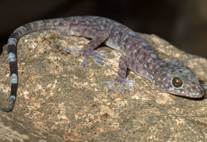Abstract
I recently published a survey of the different meanings of the nomen Amphibia in taxonomic publications since 1758 (Dubois 2015). The ‘meaning’ of a nomen in zoological nomenclature depends on the system used for the allocation of nomina to taxa, and several such systems can be used (see e.g. Dubois 2006a–b). In the paper at stake, I used the ‘orostensional nomenclatural system’ (OONS) for class-series nomenclature. In this system, a class-series nomen—i.e., a nomen above the rank superfamily, therefore one whose taxonomic allocation is not regulated by the Code (Anonymous 1999)—applies, in a given classification, to the most inclusive class-series taxon that includes all its originally expressly included nominal genera (conucleogenera) and excludes all its originally expressly excluded nominal genera (alienogenera)—if such a taxon indeed exists in this classification. However, if one a least of the alienogenera is now part of the most inclusive taxon including all the conucleogenera, the nomen cannot be taxonomically allocated and qualifies as an anaptonym in the classification used as reference (Dubois 2006a–b, 2011), although it may not be so under another taxonomic frame.

